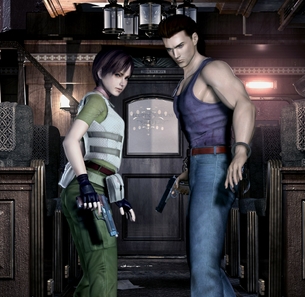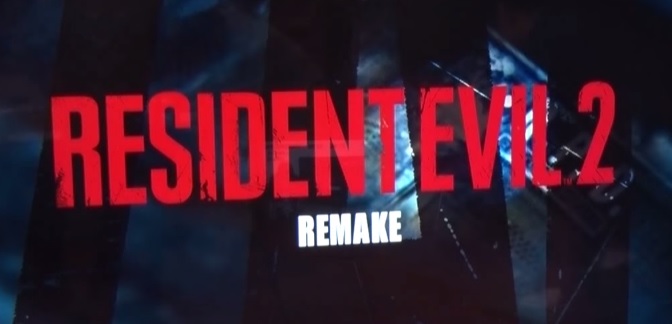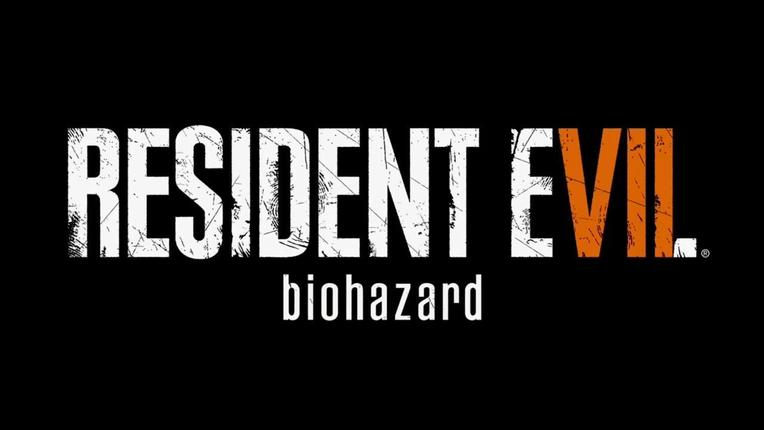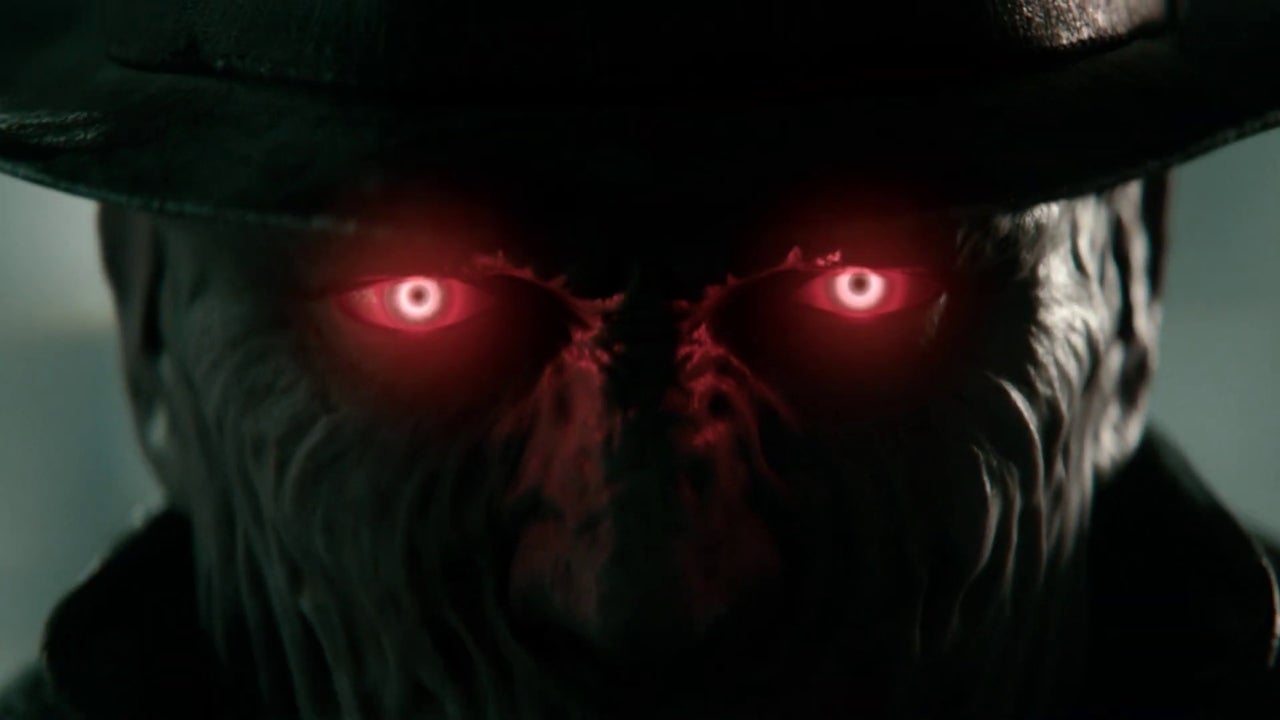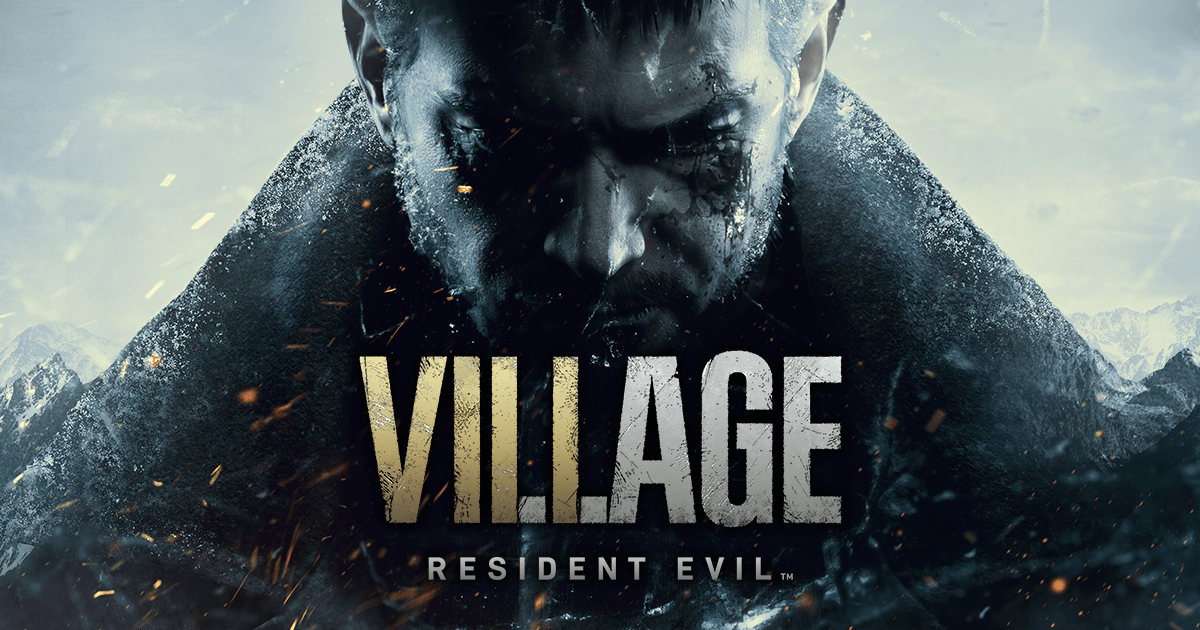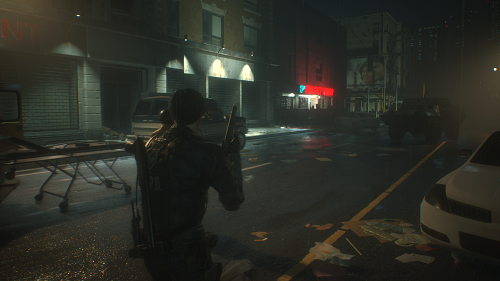
I have an embarrassing secret to share. Despite utterly adoring horror movies and novels, I have never been able to bring myself to play through a horror game. Something about being in control of the situations occurring has always gotten me anxious enough that I put my controller down and walk away, never to return, regardless of how much I love the premise. Until Dawn, Dead Space, Alan Wake and a myriad of other games have been put down, despite their premises and genre appealing to me more than anything else in entertainment. Finally, I decided that Resident Evil 2 would be the game to break the cycle, that no amount of anxiety would stop me from completing the game, and boy was it a good one for it.
Originally released for the PlayStation, Resident Evil 2 was filled with the pre-rendered backgrounds the generation was known for, and a movement and gameplay style that would be considered clunky today. In bringing the game up to the standard of current generation games, Capcom has reimagined Resident Evil 2 as third-person survival horror shooter, not dissimilar in style to later entries in the series. However, unlike those later entries in the series, Capcom have maintained the limited resources, puzzles and oppressive tone of the original. While there were some small changes here and there, including the removal of the original’s Zapping system (actions that carried over and slightly altered subsequent playthroughs), 2019’s Resident Evil 2 features many of the same puzzles, encounters and story beats from the original. This results in a remake that is unmistakably Resident Evil 2, as well as modernised in such a way that it doesn’t feel at all out of place in today’s gaming landscape.
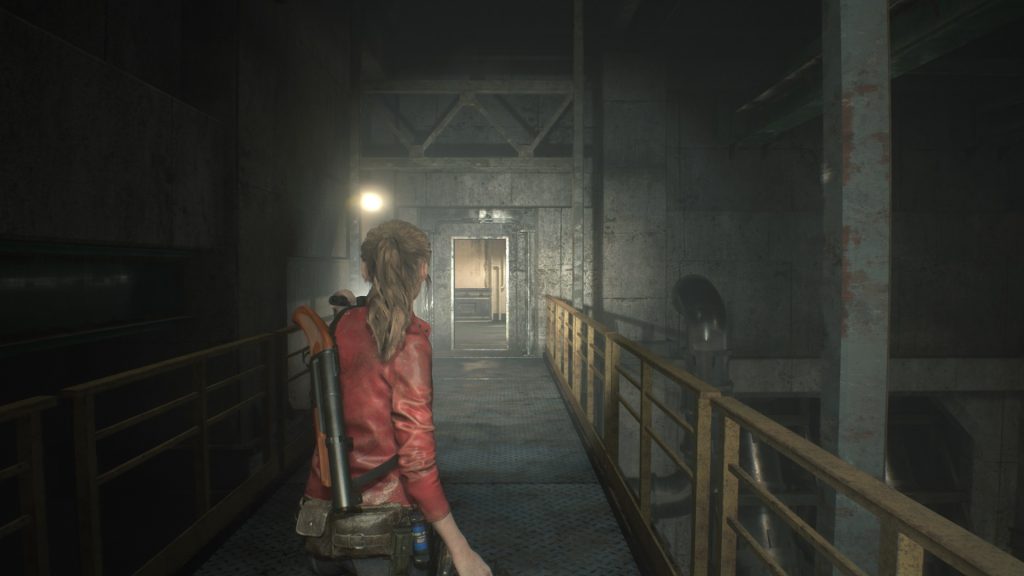
The most apparent of these changes comes in just how good Resident Evil 2 looks when running on an Xbox One X. From the characters, to the environments, every part of the game is incredibly well modelled. Models are detailed, with clothes and hair that move realistically, but it’s the game’s environments and enemies that really take the cake. Great care seems to have been taken in making the different environments distinct, while still containing the same oppressive and claustrophobic theme of the game. From the clean design of the NEST, to the cluttered artistry covering the Racoon City Police Department, everything is rendered in immense detail. Broken windows have been barricaded, doors have been forced shut with chairs, medical stations have been set up and controls for security grating have been taped shut. People tried to survive here, and you’re meant to know it. Those same survivors are now your pursuers, and the care taken to their animation is astounding. Infected survivors don’t just shamble towards you, they sway unsteadily making even the slowest hard to hit. Lickers effortlessly flow from wall to ceiling to flow, with the animations to match, and Cerberus’ flash past you with incredibly speed. As they die, or you do, heads explode with surprising viscera, entrails moistly dangle and throats are torn out, all in incredibly confronting and lovingly detailed manner. Resident Evil 2 certainly isn’t for those afraid of blood, but there is no doubt that it looks fantastic.
While Resident Evil 2 certainly looks fantastic, its best asset comes with its utterly consistent tone and design principles. No matter if the area you’re in is closed in and cluttered or open, silent and empty, there is an oppressive tone that seeps into your very being. There’s always a feeling of anxiety and paranoia as you explore, but it never completely overwhelms you. Ammo and healing items are scarce, but outside of the Hardcore difficulty only boss battles push you to the brink of running out. Every encounter has been painstakingly planned out to push you, but never to utterly overwhelm you. You’ll be worried, you might be scared, but you’ll never feel unfairly disadvantaged or punished. The only times I died came in boss encounters or when I got greedy and pushed too far or too fast. That balance extends across all difficulties available in Resident Evil 2, although obviously some are easier than others. Assisted mode makes enemies weaker, allows you to regenerate health without using herbs and allows you to use an automatic aim assist option. It makes the game easier but stops short of making it a mindless cake walk. Standard is your regular difficulty, with base enemy difficulty and requires you to use healing items, but also includes auto-saving and free saving at typewriters. Hardcore is for the most dedicated fans, there are stronger enemies, and you’ll need ink ribbons (a limited resource) to save the game. At any point though, if your die multiple times in quick succession, the game will give you option of dropping the difficulty, preventing you from getting too overwhelmed. Overall, it’s an impressive overarching design that works to challenge you, while also giving you an out if things really do get too hard.
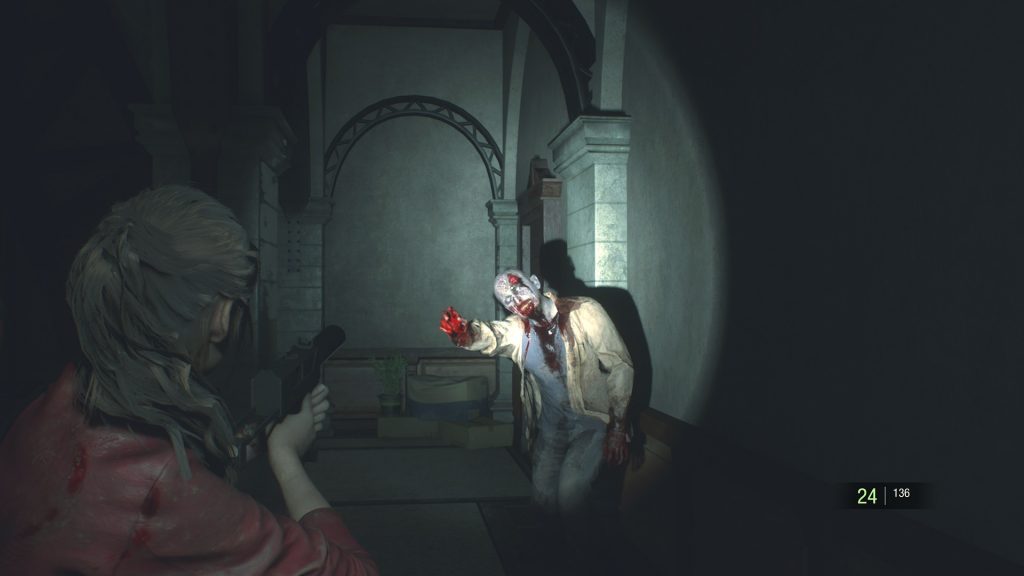
The other big change to 2019’s Resident Evil 2 comes in the modernisation of its camera and control scheme, moving to a third person camera offset behind your character. This moves away from the almost isometric viewpoint of the original, and its sometimes confusing and frustrating camera cuts, to a freely controllable 3D camera. Where this change really presents itself though, is in the game’s combat. Gone are the days of just pointing on a 2D platform to shoot. Here are the days of fully 3D movement, targeting, shooting and all the fantastic animations that come with it. While I definitely have some favourites, all of the weapons in Resident Evil 2 have their uses. Leon’s shotgun is great for blowing heads off zombies shambling towards you, while Claire’s grenade launcher is great to shoot at just about anything. Especially when you’re using flame rounds. They all feel satisfying to use, with impacts and weight suitably changing dependant on the weapon you’re using. The different enemies you’ll encounter and the different combinations of them, help to keep combat varied and interesting and push you to try new weapons to find what’s most effective. It’s a satisfying system that feels like a dream to play.
One of the least altered parts of Resident Evil 2’s remake comes in the form of its story, which is largely the same between the remake and original game. When you initially start the game you’re given the option of playing as Leon or Claire, and their subsequent campaigns investigating what has happened to Racoon City and their own personal objectives. Leon’s campaign largely focuses on Racoon City and his desire to save those around him, while Claire’s is somewhat more personal and focuses more on the human elements at play behind the overarching disaster. Throughout your time with the campaigns you’ll find yourself moving between moments of explorations, combat and puzzle solving. The game strikes a great balance between the three, constantly shaking up what you’re doing at any giving moment and even mingling them together at points. You’ll rarely be doing the same thing for too long, and that helps the overall engagement and pace of the campaigns.
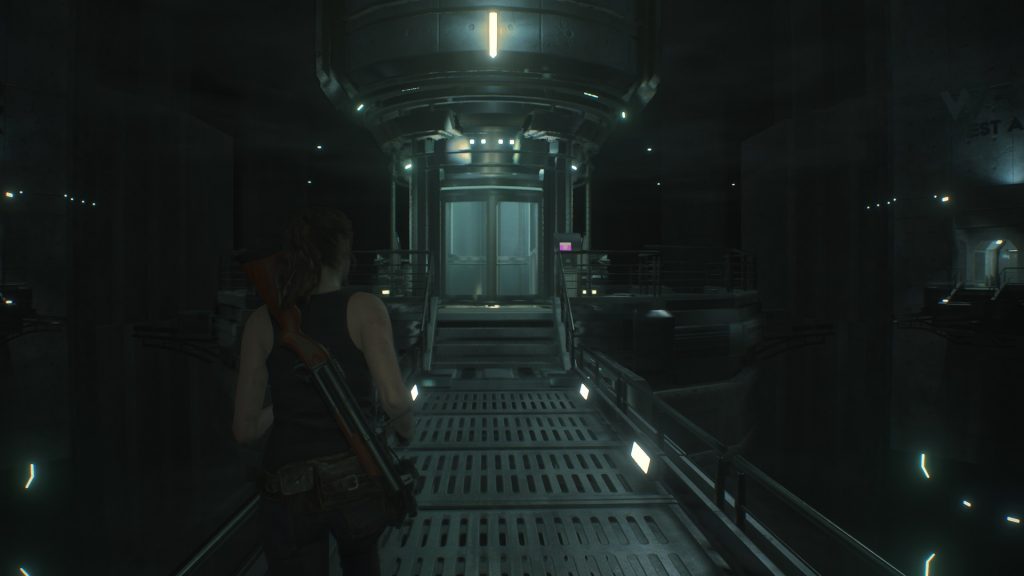
Each campaign has their own unique moments and cutscenes, but they are largely made up of the same puzzles, combat encounters and general story progression. In fact, it’s the short nature of the campaigns, and their repeated content that disappoint the most in Resident Evil 2. Built for repeated playthroughs, a standard playthrough of both A and B campaigns (beginning as one protagonist and finishing as the second) clocks in at between 10 and 12 hours, with most secrets discovered. This certainly isn’t a bad length but consider that a good 70-80% of this is the same general content doubled up and you begin to see issues. While my B playthrough with Claire was still engaging, I did get a little bored at points as I repeated the same actions as my first playthrough, just in a slightly different order. If I added a third and fourth playthrough onto that, playing as Claire first and Leon second, I’m certain I would begin to start growing properly bored. The only other content to play in the game are two unlockable survival modes, The 4th Survivor and The Tofu Survivor, that take place in the campaign environments and which present you with limited inventories, hordes of enemies, and task you with reaching a certain point alive to win. These are both incredibly difficult and will certainly require multiple attempts for most players; but there is little incentive to replay them. While there is the promise of more content to come, right now, Resident Evil 2 is a little light on unique content between its different modes, especially considering many players may never unlock The Tofu Survivor given The 4th Survivor’s difficulty.
At the end of the day, Resident Evil 2 isn’t just a great remake of an older game, it’s a game that legitimately stands up against current games in the genre. It looks fantastic and its overarching design principles create a tense and oppressive environment that never completely overwhelms the senses. While the campaigns are interesting and engaging, I just wish there were more unique puzzles and encounters between them. Resident Evil 2 is a fantastic survival horror game, and one that I would recommend to both newcomers like myself, or series veterans wanting to check out a modernisation of one of the classics.
- Enemy animations are fantastic - A great modernisation of Resident Evil 2 - Guns are satisfying to use and all feel unique - Game is extremely well balanced to challenge you without overwhelming you
- Repeated content between campaigns drags subsequent playthroughs down - The odd technical hiccup

